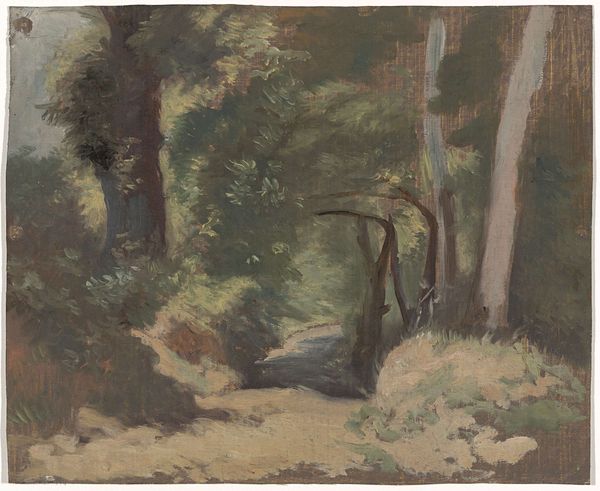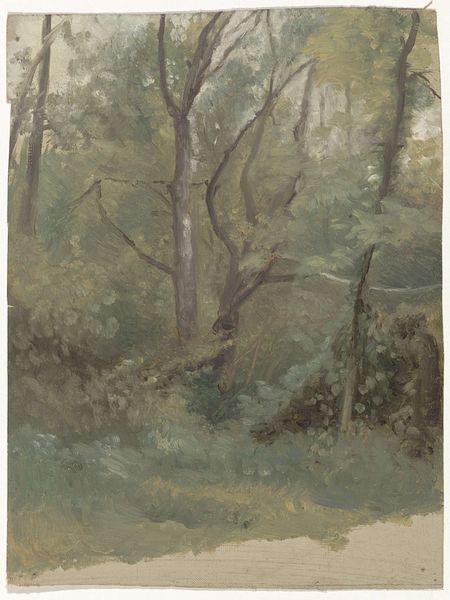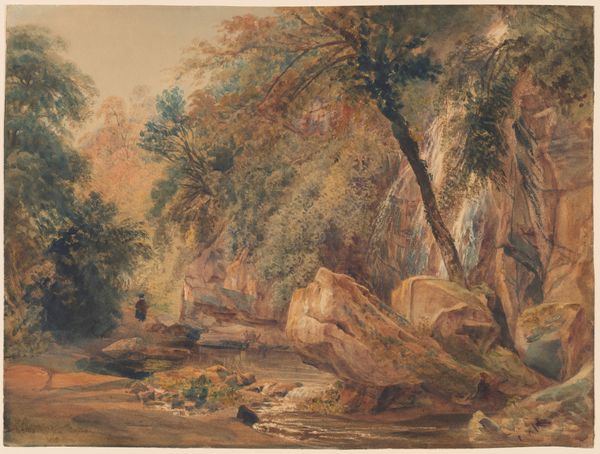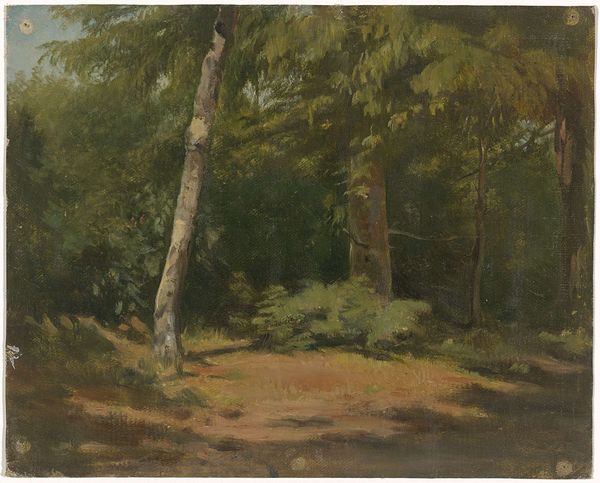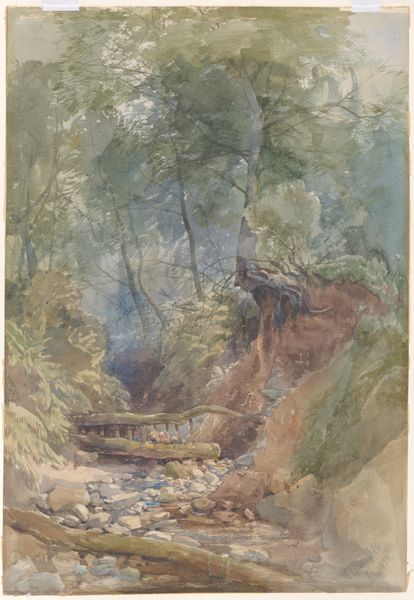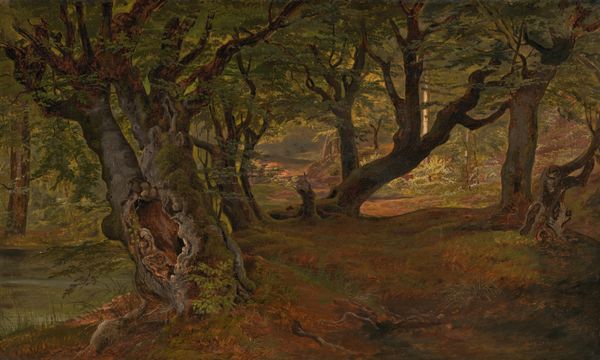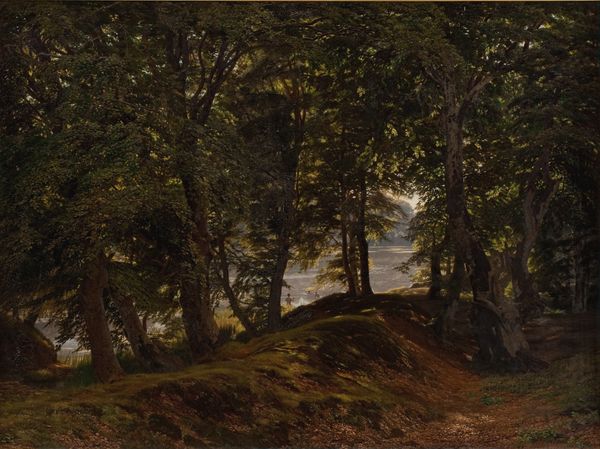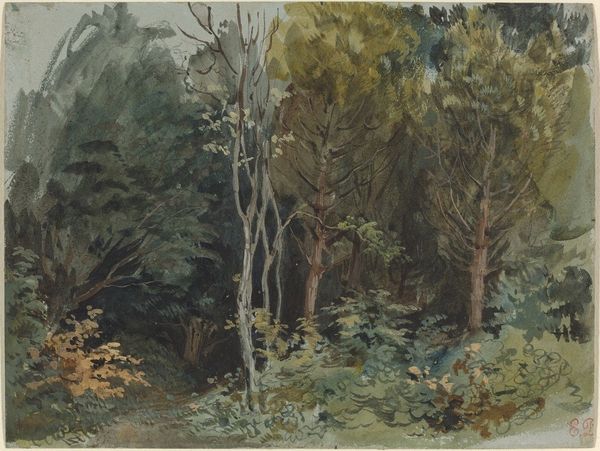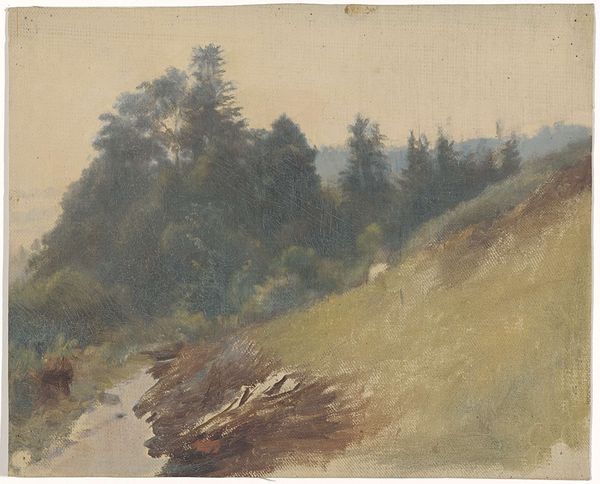
Dimensions: height 270 mm, width 345 mm
Copyright: Rijks Museum: Open Domain
Curator: Looking at “Bomen in een duinlandschap,” or “Trees in a Dune Landscape,” painted sometime between 1821 and 1891 by Guillaume Anne van der Brugghen, I immediately sense a certain hushed quality, like the moment right before something profound happens. What is your initial response to the artwork, seeing it now? Editor: There’s definitely a stillness, a deep quiet. But to me, it's almost melancholic, isn’t it? A muted palette evokes the somber tones associated with romanticism of the 19th century. The shadowy forest seems to swallow light, creating an intense space. Curator: You picked up on its quiet emotional intensity. It reflects Brugghen's interest in conveying the serene qualities of nature as an advocate of Realism movement, while incorporating impressionistic painting techniques like the plain air. What is especially interesting is that plain-air wasn't popularized as a movement till much later, by painters like Monet. Editor: Right. There's something quite profound in how Brugghen used a realism framework to present this scene, seemingly without judgement. Are we romanticizing a patriarchal past by viewing these "unfiltered" landscape scenes of that time through a rose-colored lens, thus ignoring all the systemic class/gender violence behind such pastoral settings? Curator: It is an important perspective to raise, as many paintings of this period depicted natural landscapes as idylls for society. While that's the perspective being put forward through Brugghen's perspective and focus as an artist in that moment, his work is devoid of specific social commentary, even though it emerges within the broader sociopolitical dynamics you’ve referenced. This piece in particular exists independently and should be analyzed as such. Editor: Maybe the focus is really just that: trees as individual, un-narrativized beings! To resist imposing stories where there are none! Curator: Absolutely. That interpretation resonates with Brugghen’s style. There's an argument to be made for him as a quiet observer, simply capturing light, texture, and form. The way he employs paint in visible brushstrokes emphasizes these elements of landscape. Editor: True, focusing on the immediacy of vision aligns well with a kind of rejection of prescribed roles for trees, for nature in general, but I cannot help considering if by simply documenting nature's unencumbered essence in this forest scenery, Brugghen unknowingly or knowingly, captured the zeitgeist of freedom. Curator: His use of realism to portray nature lends credence to both the literal and the conceptual arguments being presented. Editor: Looking closer, what is evident for me is that at that point in time, and for the generations to follow, the representation of our deep, almost inextricable roots to our world are evident. It shows me that even something seemingly so unpolitical can carry revolutionary force by visualizing that bond with Earth in a profound moment, something particularly needed in this era of extraction and environmental destruction. Curator: A compelling way to contextualize the artwork within contemporary dialogues on nature, politics, and representation. Editor: Indeed.
Comments
No comments
Be the first to comment and join the conversation on the ultimate creative platform.
